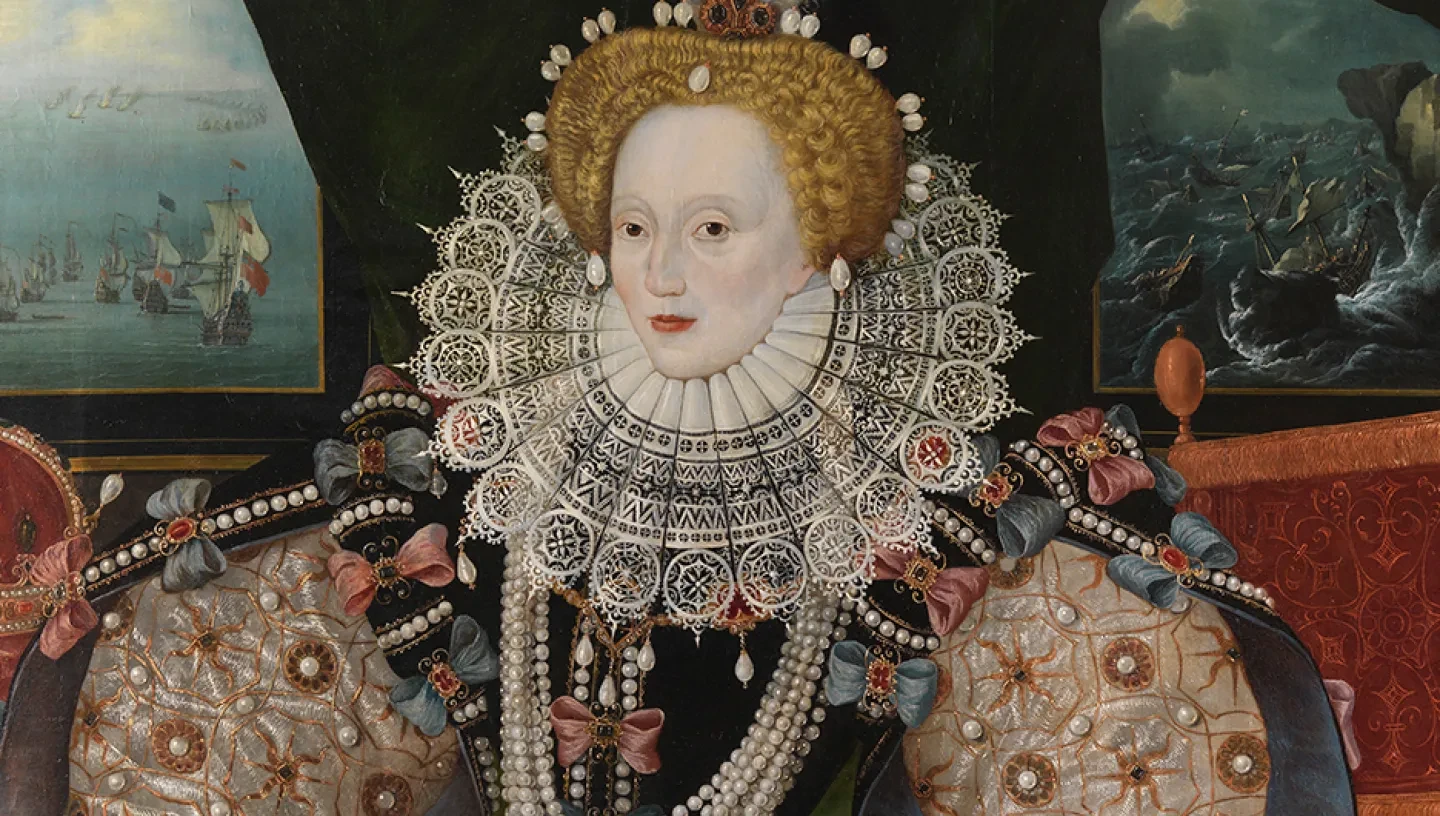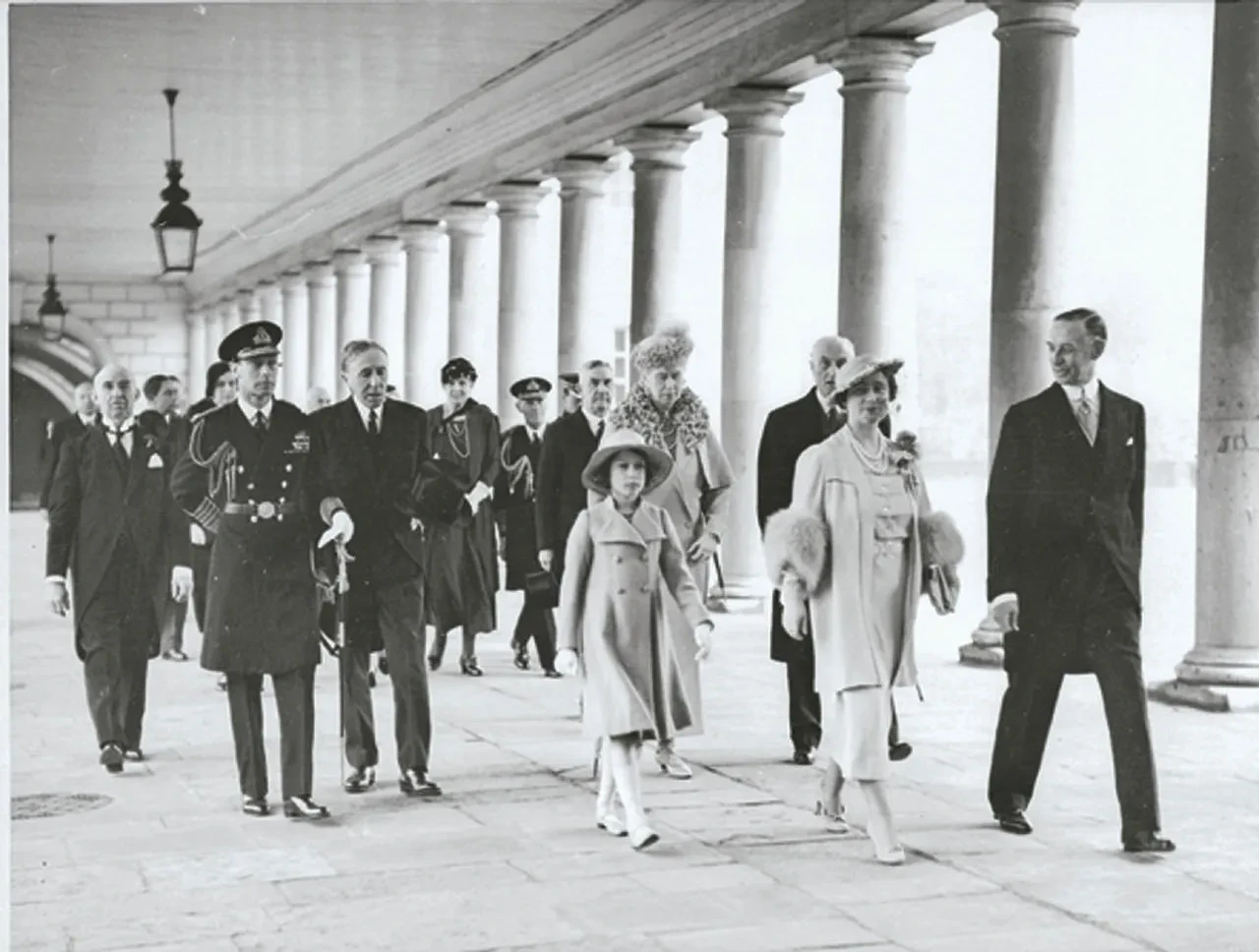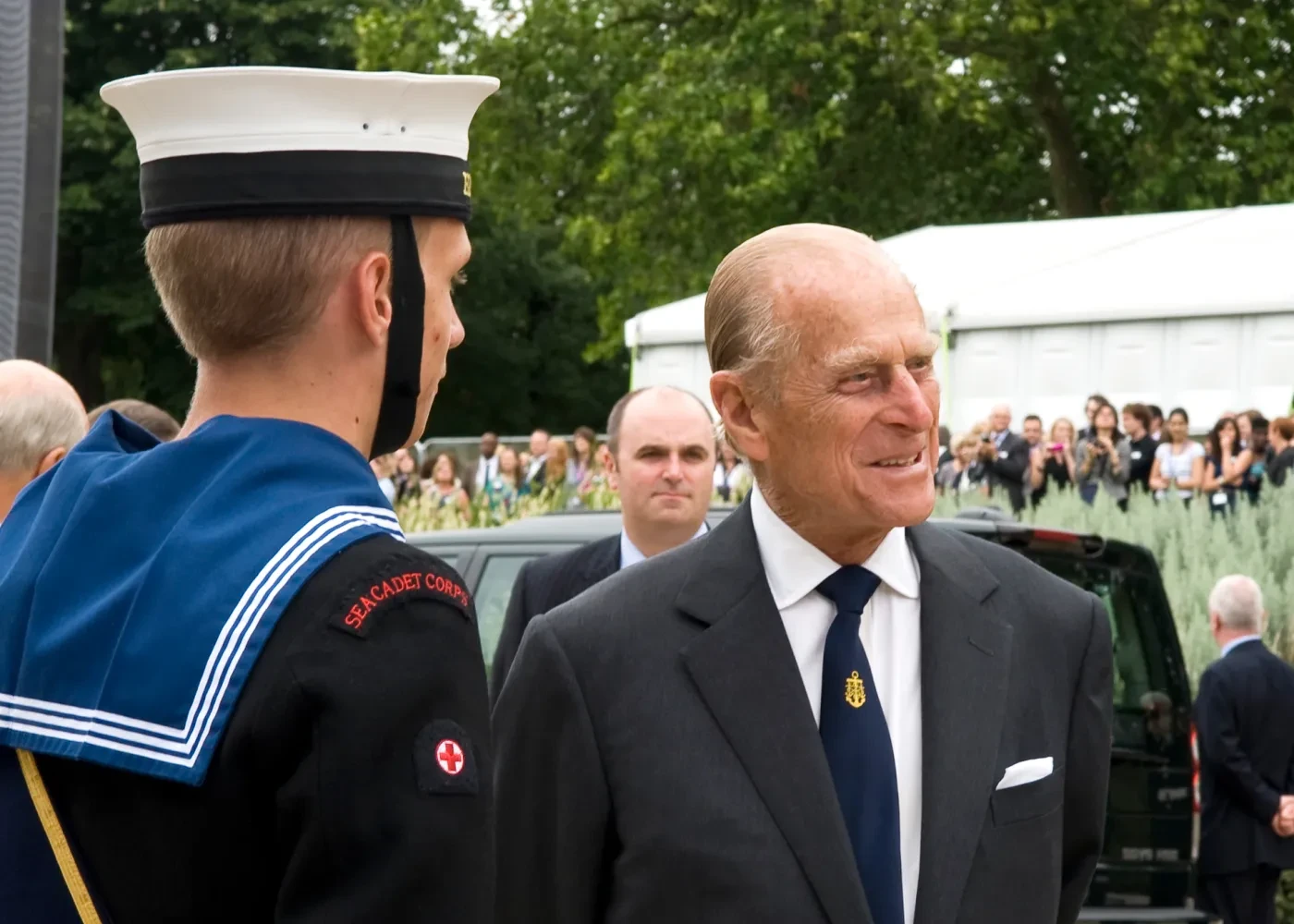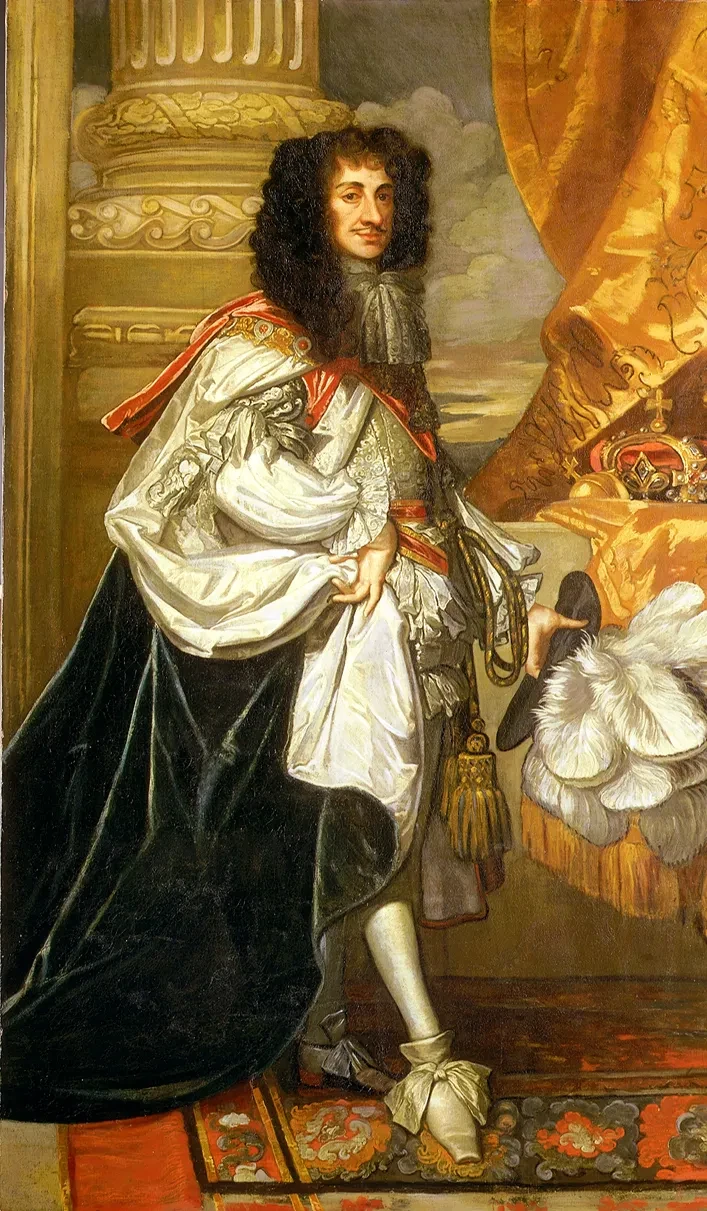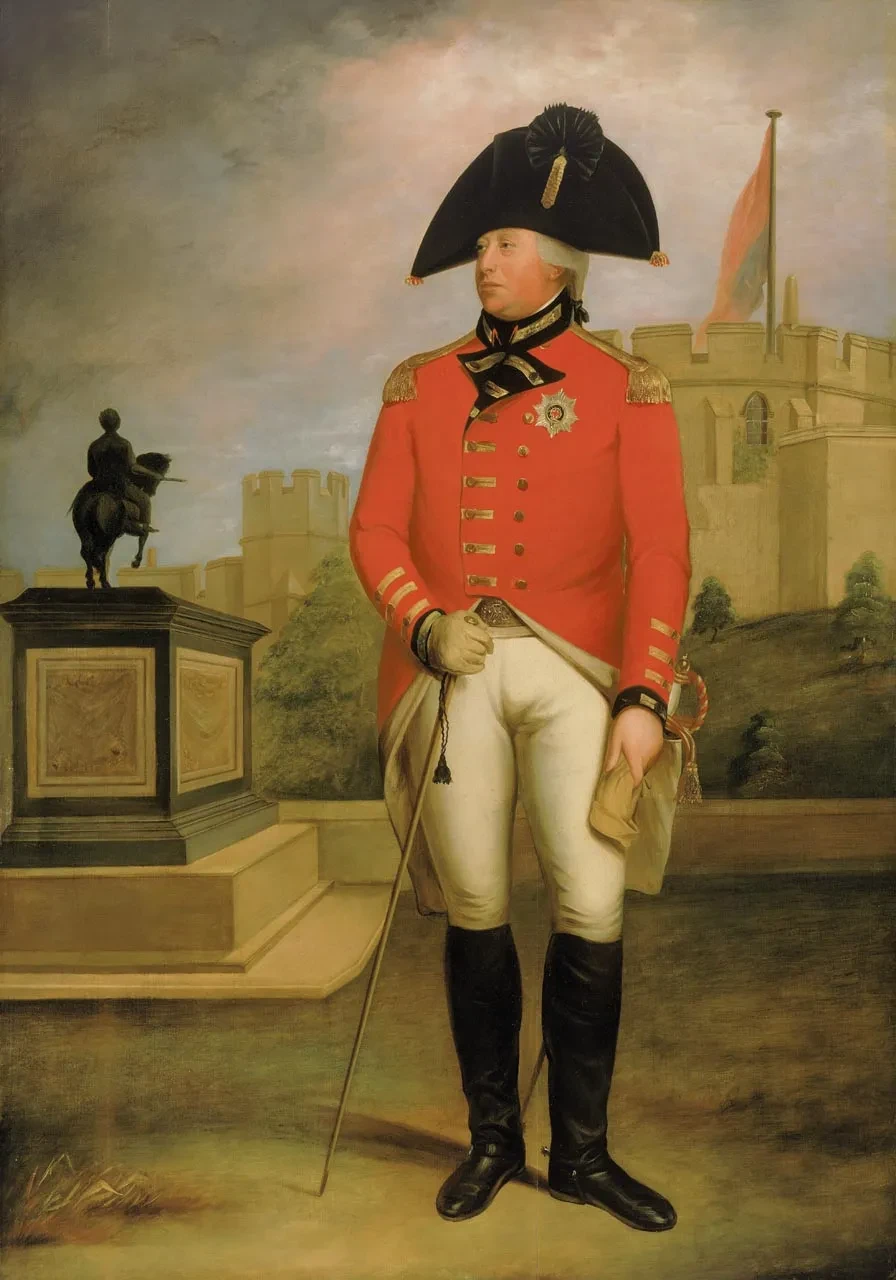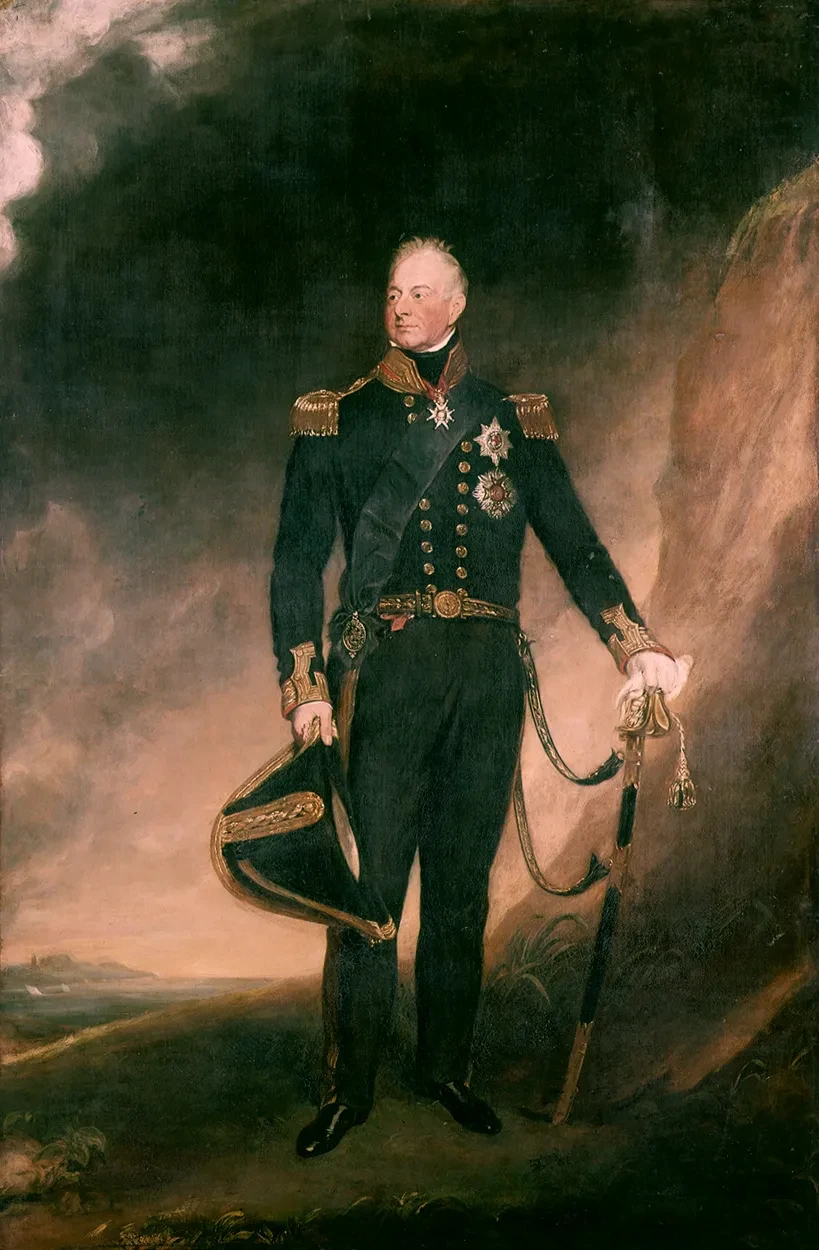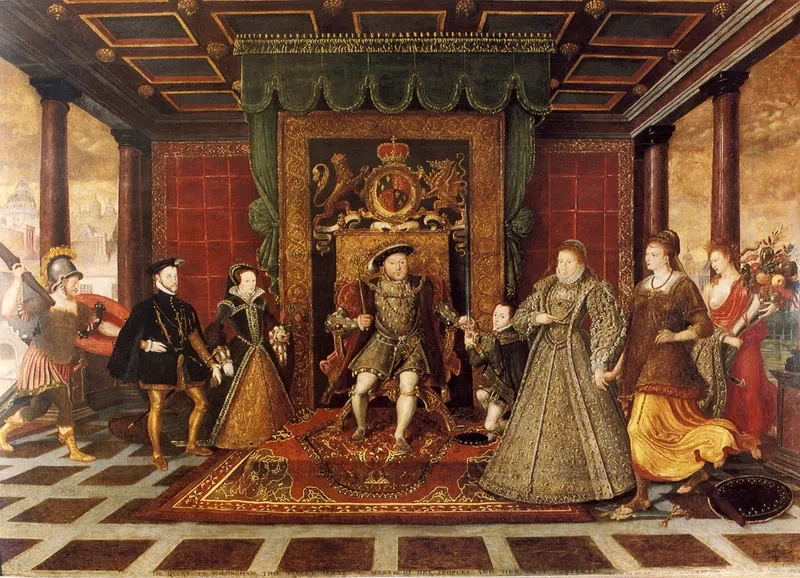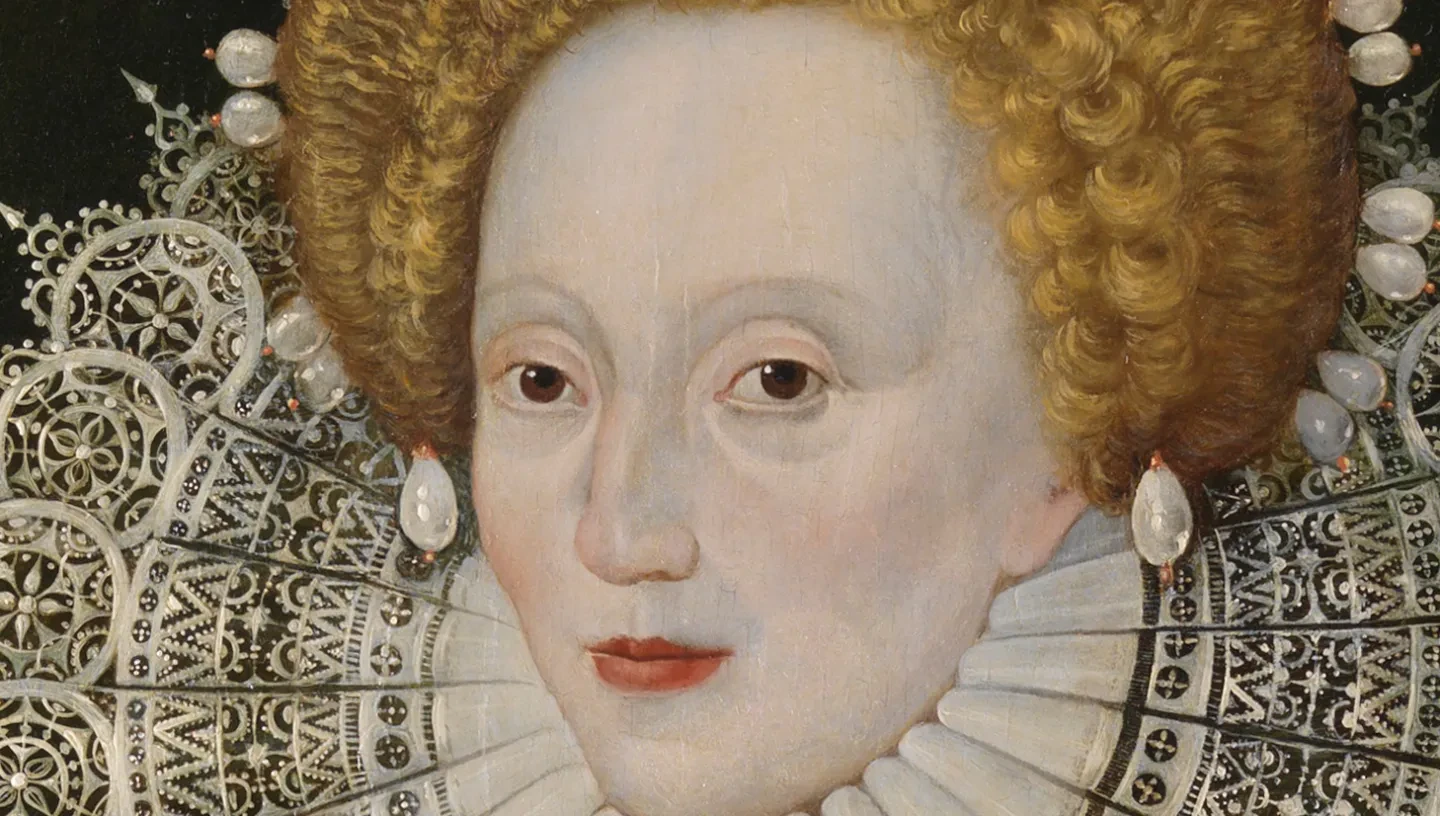
The royal portraits collection at Royal Museums Greenwich features some of Britain’s most recognisable rulers, from King Charles I to Queen Victoria.
Greenwich has long been steeped in royal history, a connection stretching back more than 500 years. King Henry VIII and Queen Elizabeth I were born at Greenwich Palace, and in 1616, the Queen’s House was commissioned by the Stuart monarch Queen Anne of Denmark.
Royalty also shaped Greenwich’s scientific and maritime heritage: in 1675, King Charles II ordered the founding of the Royal Observatory, and in 1937 King George VI opened the National Maritime Museum.
From Tudor icons to Victorian masterpieces, uncover some of the highlights of our portraiture collection, on display now at the Queen's House in Greenwich.
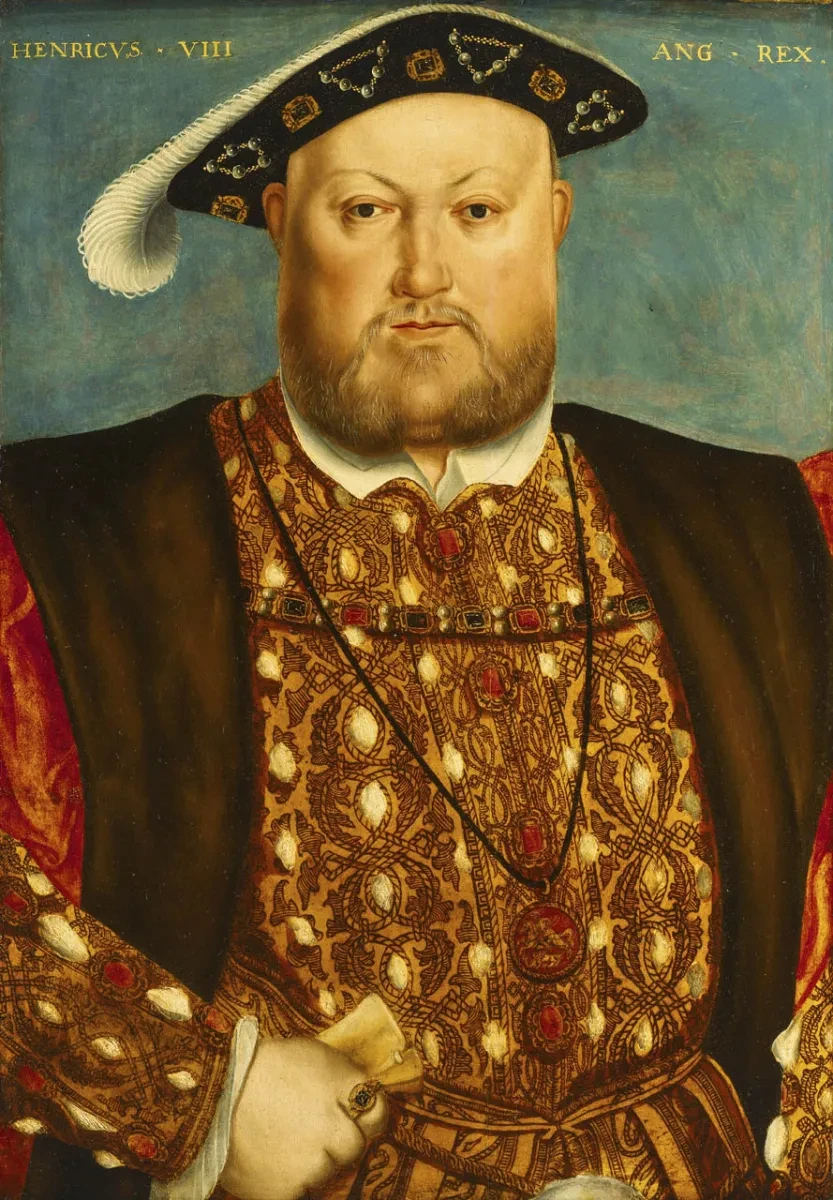
King Henry VIII
1491–1547
Staring imposingly at the viewer, King Henry VIII commands authority in this portrait by the studio of Hans Holbein the Younger.
One of Britain’s most notorious monarchs, Henry’s 37-year reign was marked with controversy. He sentenced two of his six wives to death and broke from the Roman Catholic Church after the Pope refused to annul his marriage to Katherine of Aragon.
This painting depicts Henry in his late forties – around the time he married his fourth wife, Anne of Cleves, at Greenwich. The embroidered gold doublet, black bejewelled hat and fur-trimmed coat all emphasise his status and wealth.
On display at the Queen's House
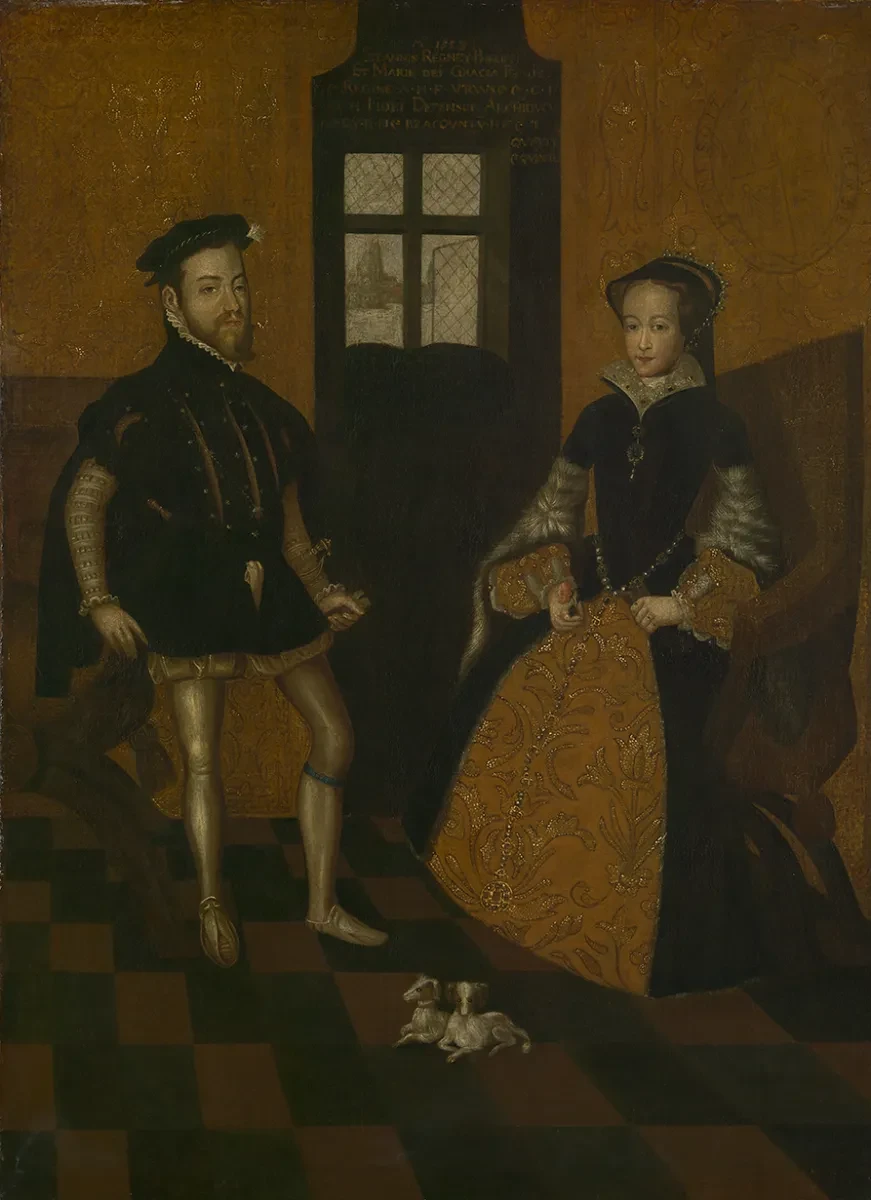
Queen Mary I of England and King Philip II of Spain
1516-1558; 1527-1598
The inscription above the open window in this double portrait of Queen Mary I of England and King Philip II of Spain celebrates the extent of the sitters' combined domains. After securing the throne in 1553, Mary married her first cousin Philip the following year – a union that was opposed by her councillors.
In this painting attributed to Flemish artist, Lucas de Heere, Philip is shown wearing the Order of the Garter, while Mary holds a rose, a reference to the Tudor heraldic symbol.
The painting is a statement of union between two nations more than two individuals. The steep pitch of the floor underscores an atmosphere of awkwardness.
On display at the Queen's House
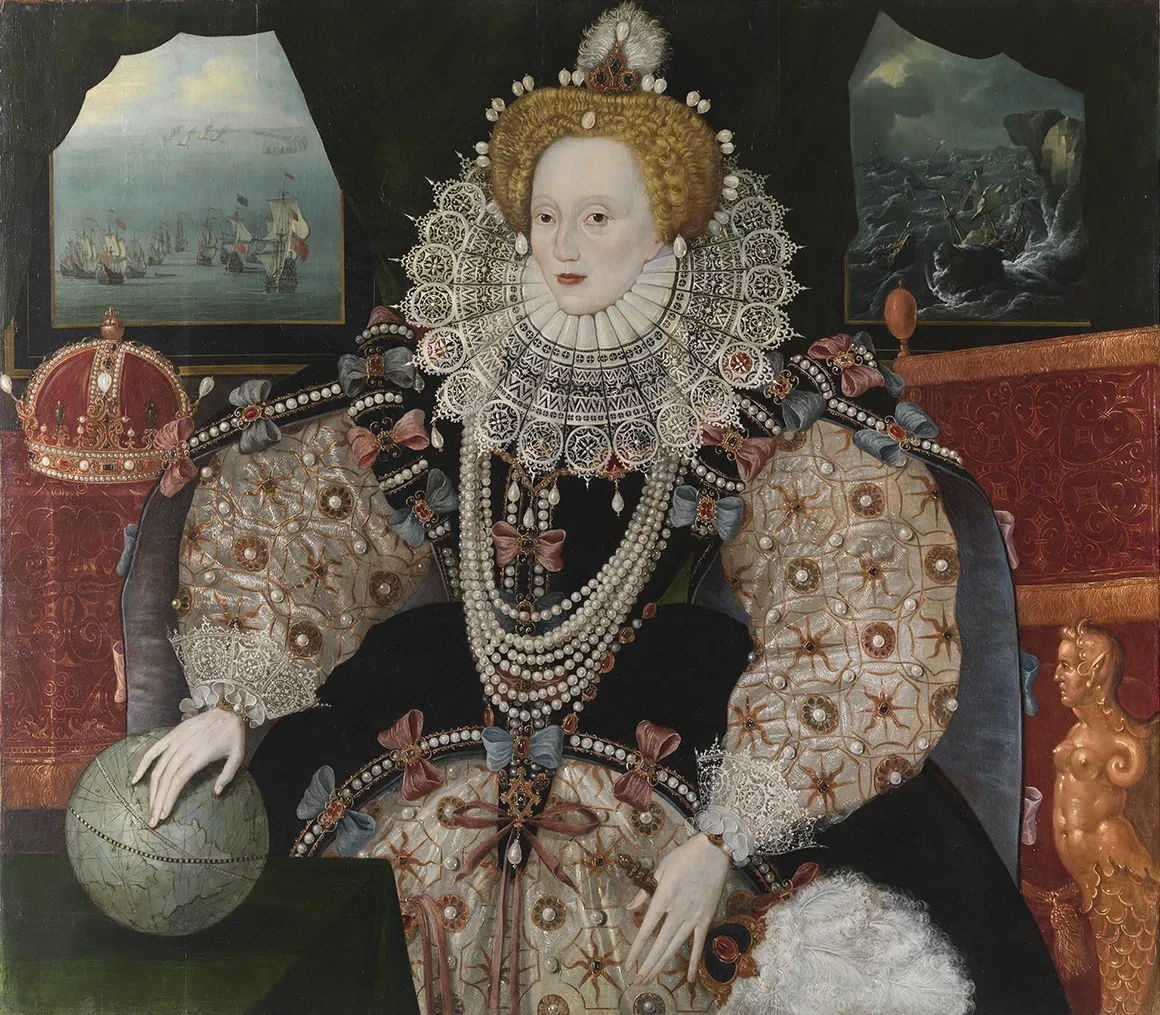
Queen Elizabeth I
1533–1603
Power and opulence combine in the ‘Armada Portrait’ of Queen Elizabeth I. Made to commemorate the defeat of the Spanish Armada in 1588 – a defining moment of Elizabeth’s reign – the painting is an enduring image of female majesty.
Elizabeth wears an extravagant dress encrusted with pearls, a reference to her chastity. She is surrounded by symbols of imperial ambition, from the terrestrial globe underneath her hand to the crown on the table beside her.
Following a nationwide funding appeal, the portrait was acquired by Royal Museums Greenwich in 2016.
On display at the Queen's House
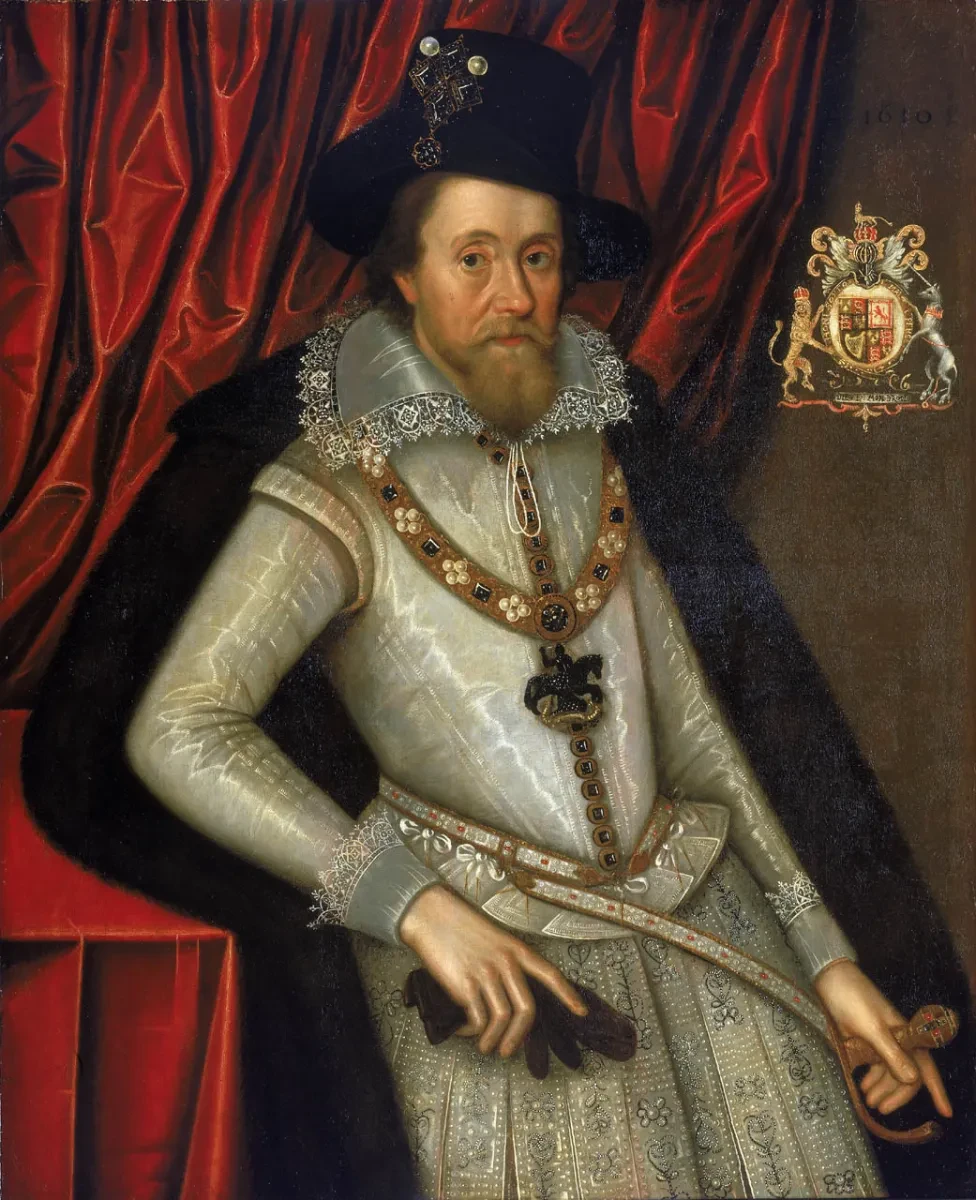
King James I
1566–1625
A controversial monarch, King James I was the target of the Gunpowder Plot of 1605 – a failed attempt to assassinate the king and blow up Parliament. Today, his legacy lives on in the form of the King James Bible – the most widely published text in the English language – which James commissioned in 1604.
This portrait depicts James wearing a white satin doublet and hose, sewn with pearls. It was made in around 1610 by the artist John de Critz.
On display at the Queen's House
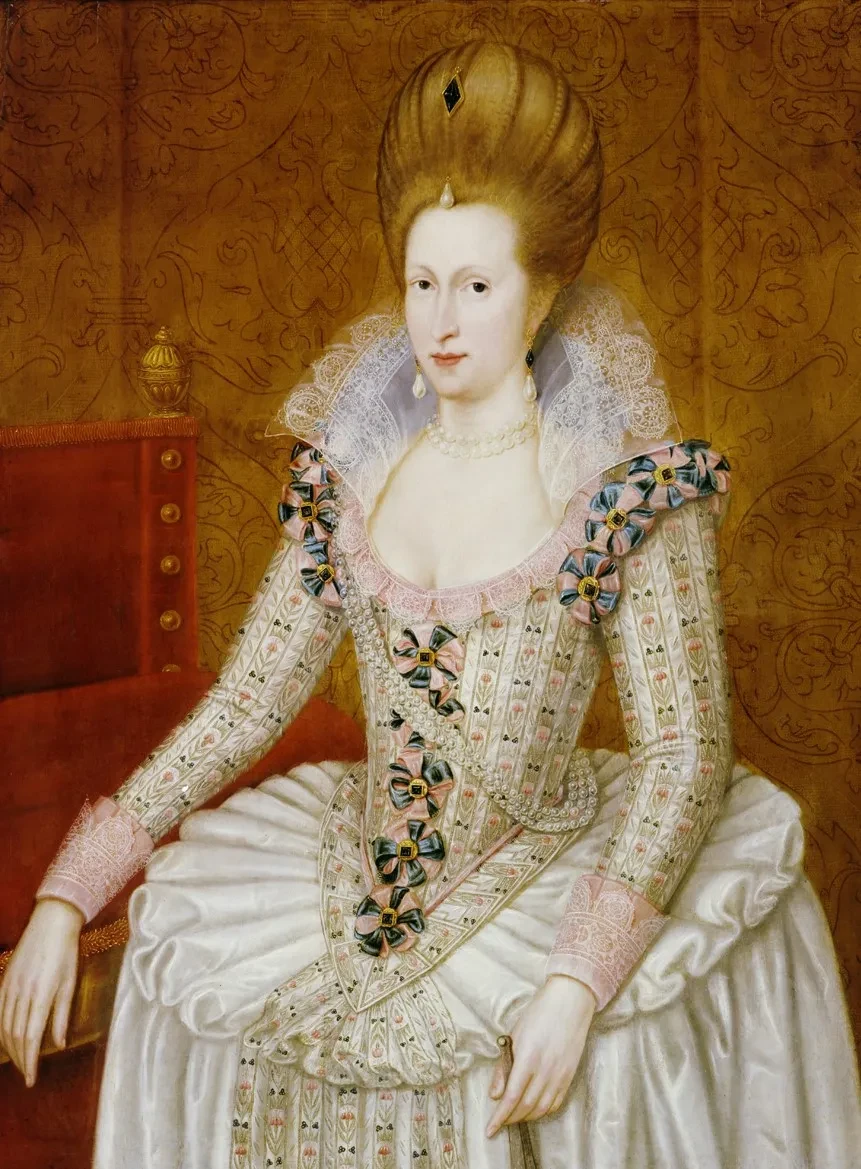
Queen Anne of Denmark
1574–1619
In 1616, Queen Anne of Denmark commissioned leading architect Inigo Jones to design the Queen’s House, England’s first Classical building.
Known for her appreciation of art, Anne also transformed the social and cultural life of the Stuart court, including ordering and performing 'masques': elaborate performances of music and dance.
Depicted wearing an ornate gown, Anne of Denmark stares steadily at the viewer in this work by artist John de Critz. The painting would have been part of a pair, accompanying a portrait of her husband, King James I of England.
On display at the Queen's House
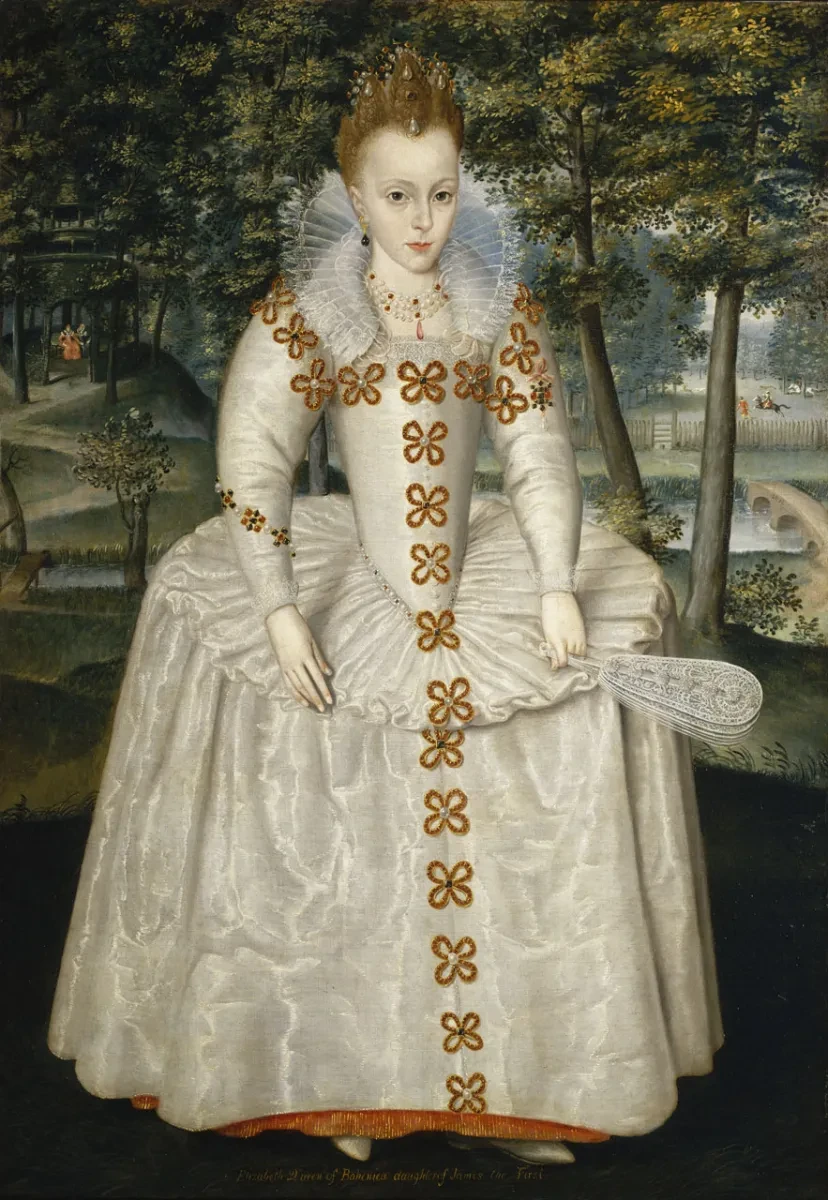
Princess Elizabeth Stuart
1596–1662
This masterpiece of early English portraiture depicts Elizabeth of Bohemia, King James I and Queen Anne of Denmark’s only surviving daughter.
At the time this portrait was painted, the seven-year-old Elizabeth was already regarded as an important tool in international royal marriage negotiations. Her opulent clothes and jewellery highlight her suitability as a wealthy bride.
Look closely to spot a hunting scene in the distance – thought to represent Elizabeth’s brother Prince Henry and his friend John Harington.
Ten years after this portrait was painted, Elizabeth married Frederick V, Elector Palatine of the Rhine, and later King of Bohemia. Unfortunately, following Frederick’s defeat in battle, Elizabeth spent much of her life in exile in The Hague.
On display at the Queen's House
Discover more great art
Sign up to the art newsletter for more information about Royal Museums Greenwich's art collection, and learn about upcoming exhibitions and events.
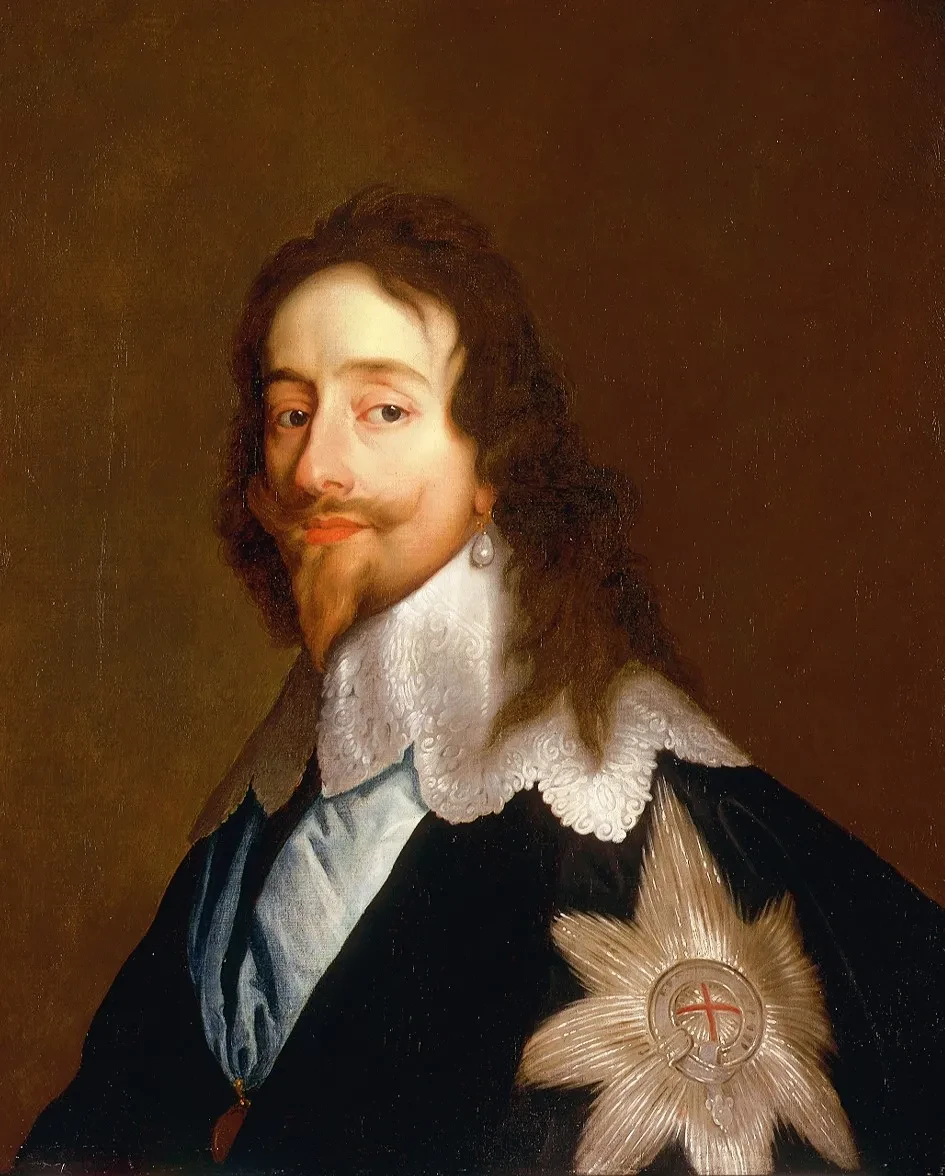
King Charles I
1600–1649
Civil war and religious and political turmoil were just some of the disasters of King Charles I’s reign, which resulted in his trial and execution for treason in 1649.
Painted in the style of Van Dyck, this work shows Charles wearing a dark cloak with the Star of the Garter embroidered on it. A pearl earring hangs from his left ear, thought to be the one he wore on the day of his execution.
During his lifetime, Charles was a prolific art patron and collector, amassing works by Titian, Holbein and Rubens. For Charles, art was an important way to promote his idea of kingship.
On display at the Queen's House
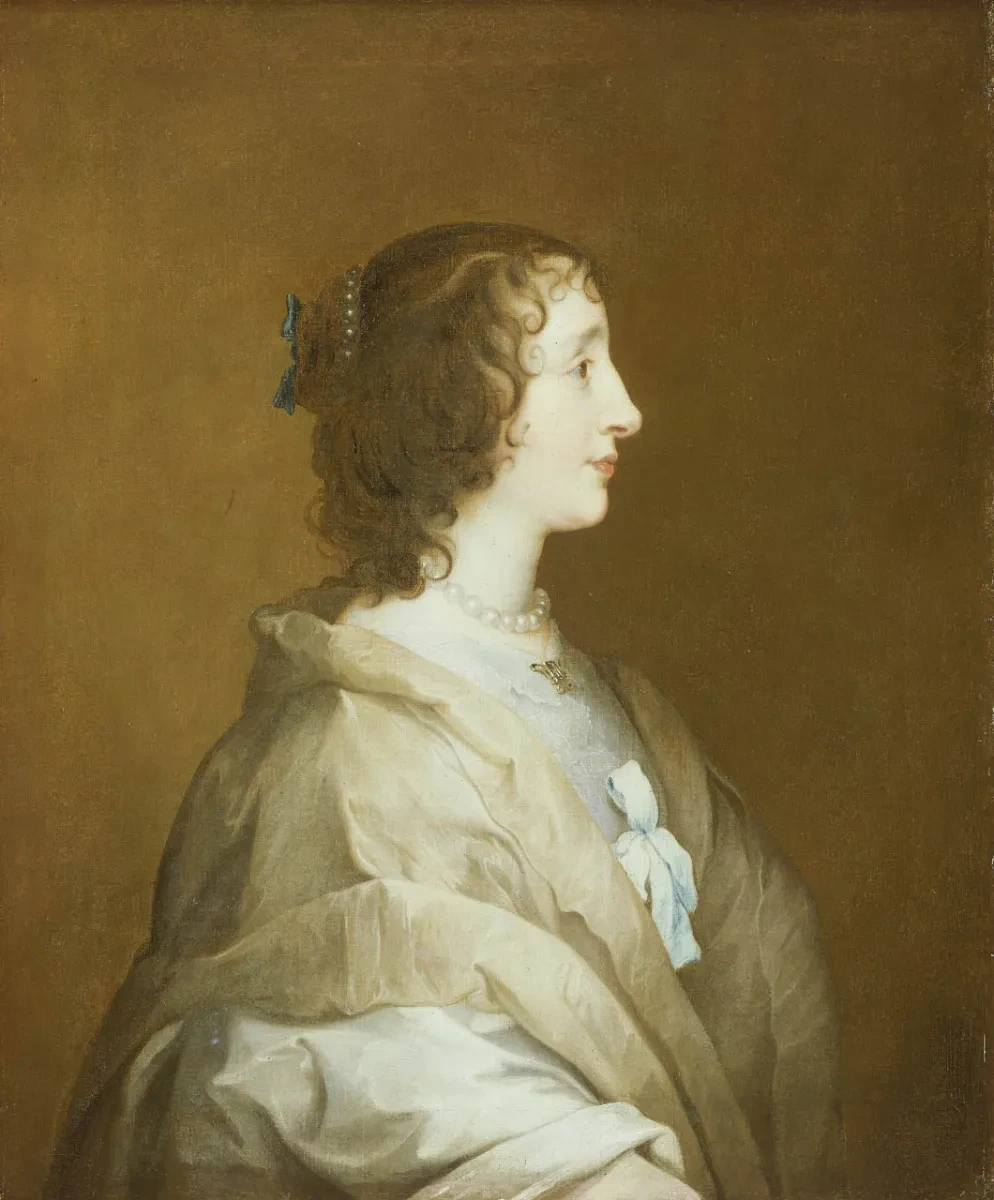
Queen Henrietta Maria
1609–1669
A leading patron of the arts, Queen Henrietta Maria established the Queen’s House as a centre of culture and creativity.
She oversaw architect Inigo Jones’s completion of the building in the 1630s and commissioned a spectacular painted ceiling from the Italian artists Orazio and Artemisia Gentileschi.
This portrait was made by court artist, Anthony van Dyck. It bears similarities to his triple portrait of King Charles I – Henrietta Maria’s husband – which was used to create a marble bust. Henrietta wished to commission a companion bust of herself. This portrait was one of three profiles made by Van Dyck in preparation for the bust.
On display at the Queen's House
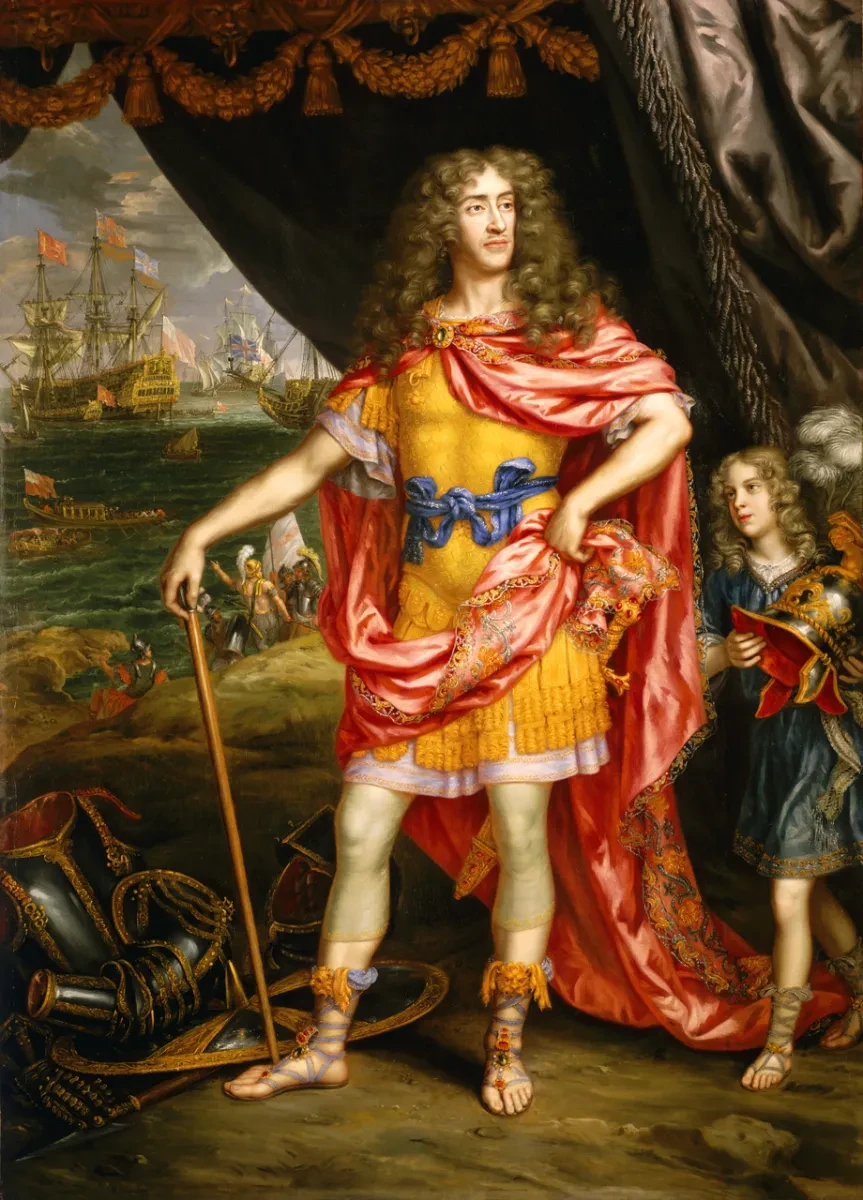
King James II
1635–1701
Complete with gleaming golden armour and a vibrant silk coat, King James II represents Mars, the Roman god of war, in this portrait by Henri Gascar.
A fleet of ships in the top left-hand corner provide a nod to James’ seafaring career. During the reign of his elder brother, King Charles II, James was appointed Lord High Admiral. One of his most important naval engagements was the Battle of Solebay in 1672, a conflict between a Dutch fleet and a combined force of English and French ships. An elaborate tapestry on display in the Queen’s House depicts a climactic moment from the conflict.
James came to the throne in 1685, but his reign was short-lived. In 1688 he was overthrown in the Glorious Revolution, which saw King William III and Queen Mary II become joint ruling sovereigns.
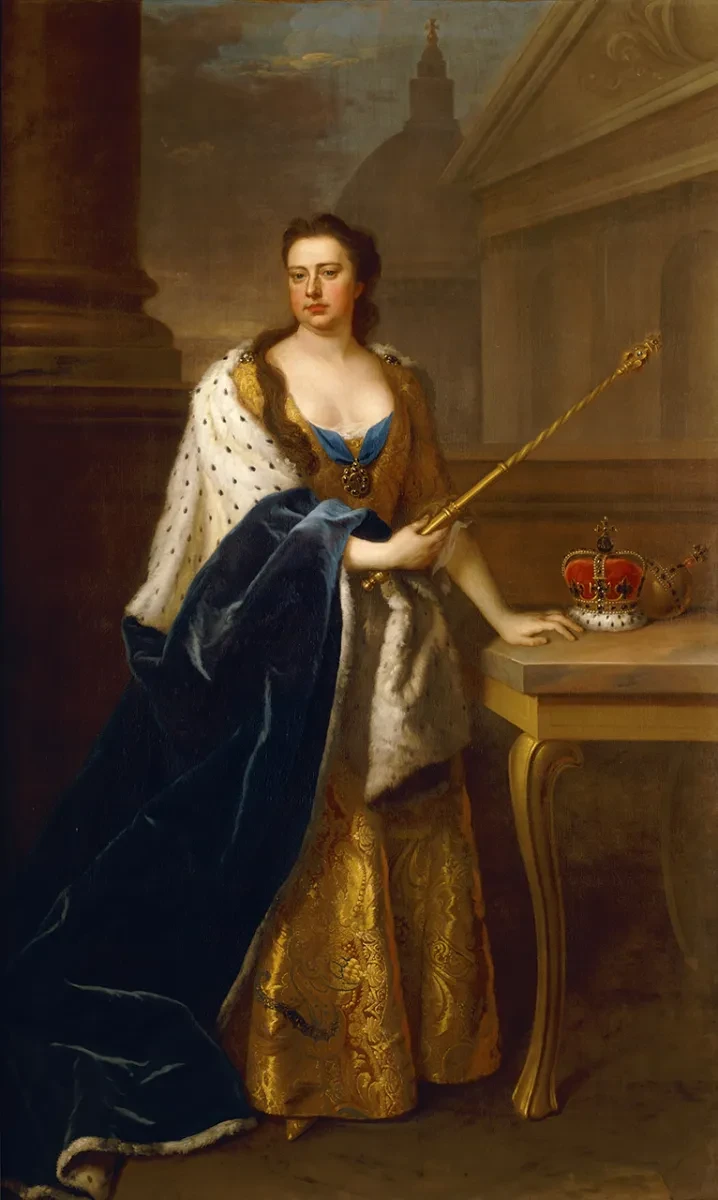
Queen Anne
1665–1714
Queen Anne was the first sole queen regnant after Queen Elizabeth I. This meant that she was a female monarch who reigned in her own right, rather than becoming queen through marriage to a king.
This commanding portrait by Michael Dahl depicts Anne dressed in coronation robes and holding a sceptre. During her reign, Anne played an active role in scientific affairs. In 1714, she passed the ‘Longitude Act’ which offered a financial reward to anyone who could find an accurate method for navigation at sea. The position of Astronomer Royal at Greenwich was listed as one of the Commissioners of Longitude, a panel that assessed the submissions.
She was also one of the early promoters of Greenwich Hospital, an institution that looked after injured and retired seafarers.
On display at the Queen's House
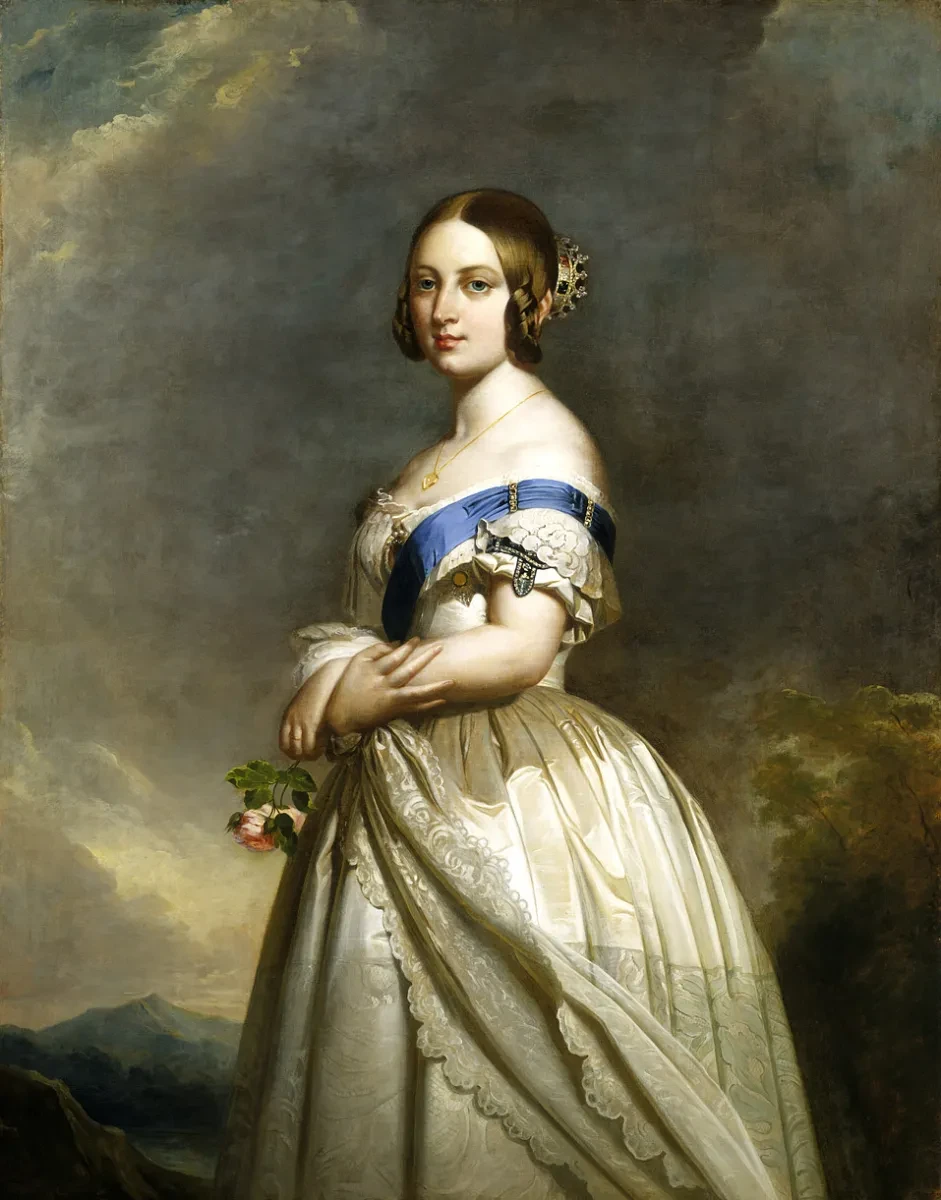
Queen Victoria
1819–1901
Queen Victoria’s 63-year reign witnessed many changes, including revolutionary breakthroughs in the arts and sciences, industrial transformation, the expansion of the British Empire and the growth of political reform movements.
Painted a few years after Victoria came to the throne in 1837, this portrait shows Victoria gazing steadily beyond the viewer. Look closely to spot the locket around her neck, containing a lock of hair from her beloved husband Prince Albert.
On display at the Queen's House
Royal connections
Discover more kings, queens, princes and princesses who have shaped Greenwich or are featured in our collections
